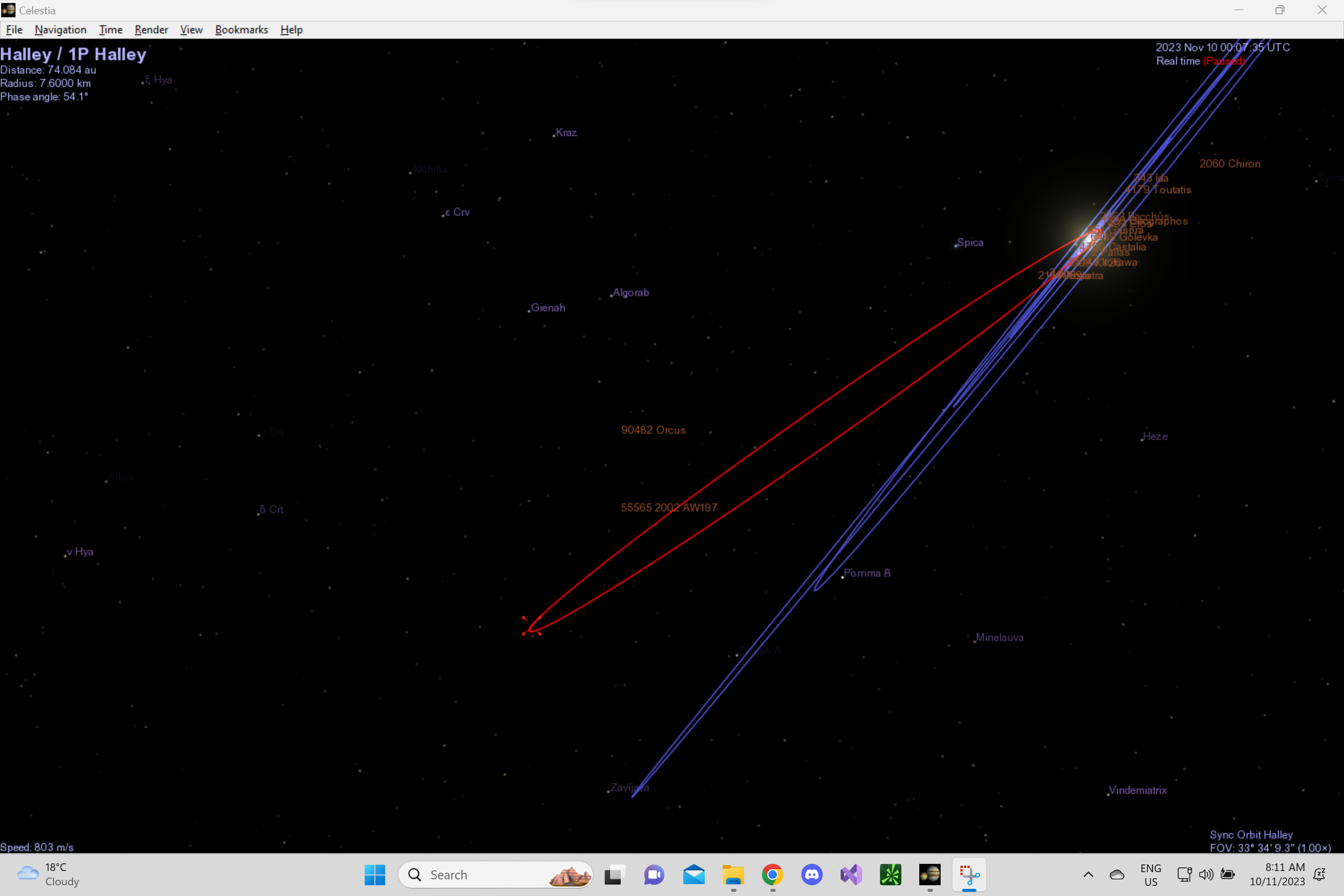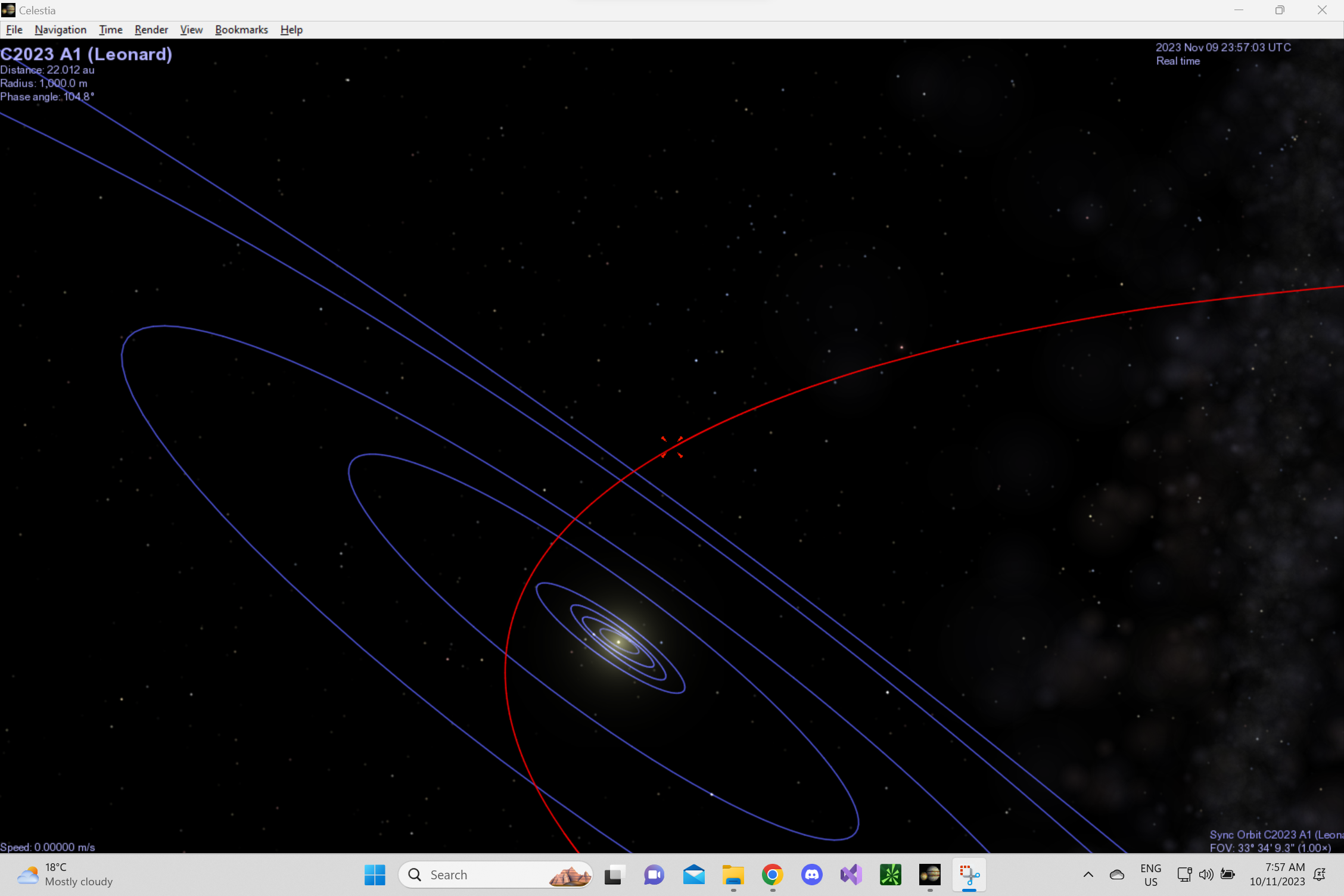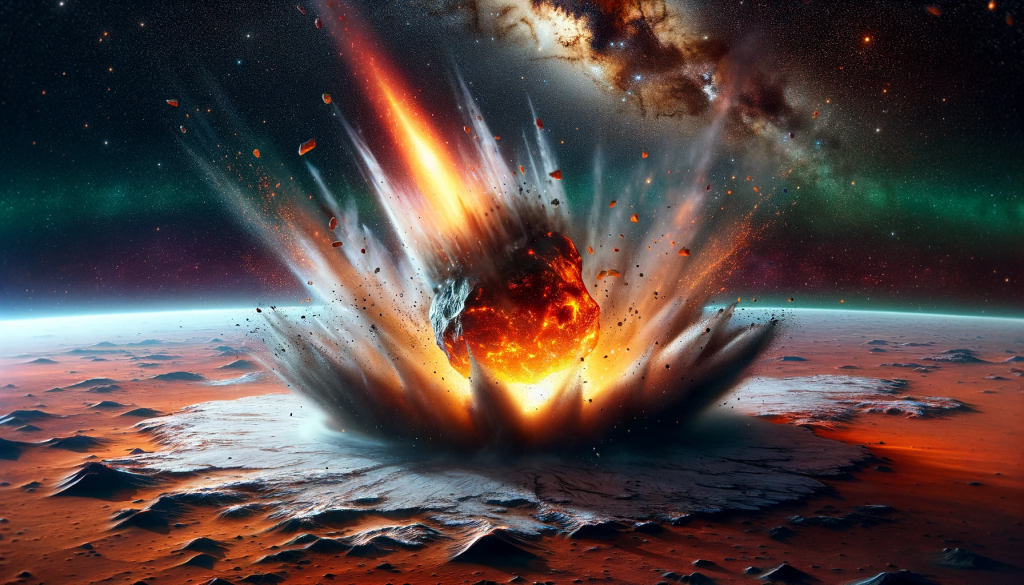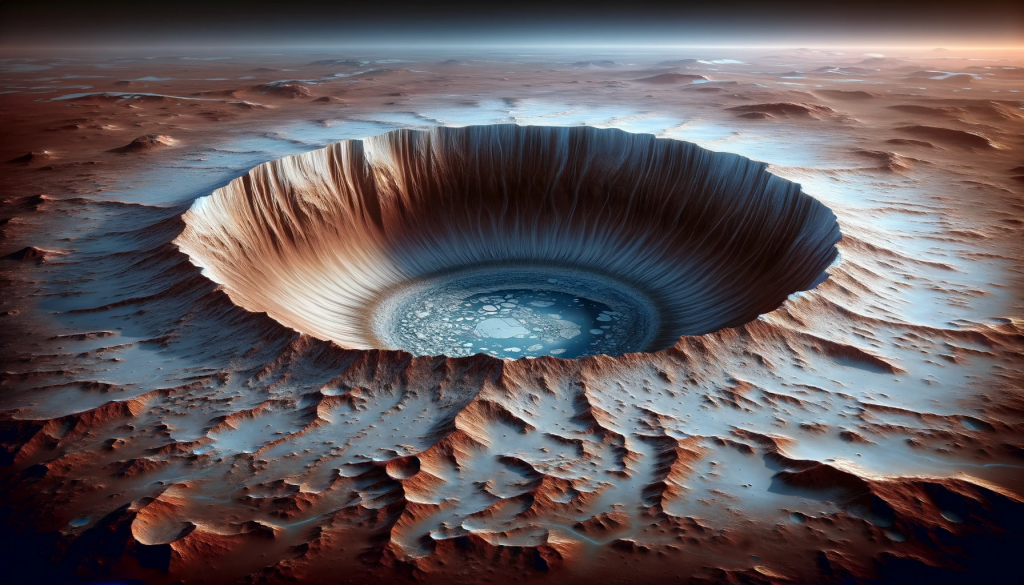New Mars Forums
You are not logged in.
- Topics: Active | Unanswered
Announcement
#51 2023-11-08 17:02:22
- RobertDyck
- Moderator
- From: Winnipeg, Canada
- Registered: 2002-08-20
- Posts: 8,291
- Website
Re: Deep Asteroid Crater Habitat Proposal for Mars
Thanks for this but what is the email of the admin of this convention that I have to email when the time is right? Or the website to fill out the form?
You'll have to wait until the next convention is announced in the news announcements on www.marssociety.org
A news announcement last April 13
Presentations for the 26th Annual International Mars Society Convention, set for Thursday-Sunday, October 5-8, 2023 at Arizona State University in Tempe, are invited.
This year’s four-day global forum will deal with all matters associated with the exploration and settlement of the Red Planet, including science, technology, engineering, politics, public policy & advocacy, STEM education, economics, etc.
Abstracts between 150-300 words can be uploaded on our Mars Society convention web site at: abstracts.marssociety.org. Please note that the deadline for submitting abstracts for consideration is Thursday, August 31, 5:00 pm MT.
Additional details about the 2023 International Mars Society Convention, including online registration, volunteer and sponsorship opportunities, and hotel recommendations will be posted on the convention web site in the coming days and weeks. If you have any questions, please contact: convention-staff@marssociety.org.
Offline
Like button can go here
#52 2023-11-08 17:23:46
- Calliban
- Member
- From: Northern England, UK
- Registered: 2019-08-18
- Posts: 4,269
Re: Deep Asteroid Crater Habitat Proposal for Mars
The ejecta from a 50km diameter impactor would be a danger to anyone on the planet. The shockwave through the crust would imperil structures thousands of km away. The only way you can do this is if there are literally no other people on the planet when you do it.
That aside, if we can find a recent large crater on Mars, there should remain a lot of heat from the impact in the rock under the crater floor. Given how much heat we are going to need to support agriculture on Mars, a find like that could be very valuable.
Back in 2021, a 12m diameter object hit Mars. Assuming a stony iron composition (rho = 2600kg.m-3), a spherical shape and an impact velocity of 10km/s, the rock would have carried about 30GWh of kinetic energy. That is 3.6MW-yr. Not bad for a crater that is only 150m in diameter. And that assumes only a 10km/s impact speed. Energy scales with the square of impact velocity.
Last edited by Calliban (2023-11-08 17:56:31)
"Plan and prepare for every possibility, and you will never act. It is nobler to have courage as we stumble into half the things we fear than to analyse every possible obstacle and begin nothing. Great things are achieved by embracing great dangers."
Offline
Like button can go here
#53 2023-11-09 05:26:03
- PhotonBytes
- Member
- From: AUSTRALIA
- Registered: 2019-12-28
- Posts: 116
- Website
Re: Deep Asteroid Crater Habitat Proposal for Mars
The ejecta from a 50km diameter impactor would be a danger to anyone on the planet. The shockwave through the crust would imperil structures thousands of km away. The only way you can do this is if there are literally no other people on the planet when you do it.
That aside, if we can find a recent large crater on Mars, there should remain a lot of heat from the impact in the rock under the crater floor. Given how much heat we are going to need to support agriculture on Mars, a find like that could be very valuable.
Back in 2021, a 12m diameter object hit Mars. Assuming a stony iron composition (rho = 2600kg.m-3), a spherical shape and an impact velocity of 10km/s, the rock would have carried about 30GWh of kinetic energy. That is 3.6MW-yr. Not bad for a crater that is only 150m in diameter. And that assumes only a 10km/s impact speed. Energy scales with the square of impact velocity.
Yeah I wouldn't dream to leave anyone on Mars if and when we do this. The L1 Magnetic generator should also be fully operational first. As I said I am reconsidering the crater as a requirement. I think it makes more sense to just make a non nuclear version of Elon's idea to melt the poles. I think one large ice object landing in the north or south pole at minimum velocity should replenish the entire planet with 0.5 bars minimum of atmosphere without denting much of the crust. Perhaps land it at 5km/s max. We can then all live there with scuba diving tanks instead of pressurized suits. Airships will work again and we can therefore have Martian mobile floating bases.
There will also be liquid water immediately in the form of rivers flowing from the strike zone forming seas.
But I think we should leave some Gopro cameras on tripods with live streaming equipment!
Last edited by PhotonBytes (2023-11-09 07:07:26)
I play the piano
https://fb.watch/s7XPqxw02-/
Offline
Like button can go here
#54 2023-11-09 07:04:08
- Calliban
- Member
- From: Northern England, UK
- Registered: 2019-08-18
- Posts: 4,269
Re: Deep Asteroid Crater Habitat Proposal for Mars
Deimos has an orbital speed of 1.35km/s and is tidally locked to Mars.
https://en.m.wikipedia.org/wiki/Deimos_(moon)
An electromagnetic cannon could be mounted on the moon and its orbital speed is low enough for the cannon to fire packages of surface regolith on a trajectory that impacts the poles. The impact would vaporise surface ice and spread dark dust over the cap. This will reduce the albedo of the surface ice. This allows the relatively small energy input to the gun to produce a much greater effect than could be delivered by the impact alone. It would be preferable to design the projectiles to disperse the dust without shock heating it on impact. We could do this by emedding the dust into a cermet of frozen gas that would vaporise on impact. We could sort the regolith fines before incorporating them. We want the smallest grain sizes possible to achieve the highest solar absorption per unit mass.
"Plan and prepare for every possibility, and you will never act. It is nobler to have courage as we stumble into half the things we fear than to analyse every possible obstacle and begin nothing. Great things are achieved by embracing great dangers."
Offline
Like button can go here
#55 2023-11-09 07:10:20
- PhotonBytes
- Member
- From: AUSTRALIA
- Registered: 2019-12-28
- Posts: 116
- Website
Re: Deep Asteroid Crater Habitat Proposal for Mars
Deimos has an orbital speed of 1.35km/s and is tidally locked to Mars.
https://en.m.wikipedia.org/wiki/Deimos_(moon)An electromagnetic cannon could be mounted on the moon and its orbital speed is low enough for the cannon to fire packages of surface regolith on a trajectory that impacts the poles. The impact would vaporise surface ice and spread dark dust over the cap. This will reduce the albedo of the surface ice. This allows the relatively small energy input to the gun to produce a much greater effect than could be delivered by the impact alone. It would be preferable to design the projectiles to disperse the dust without shock heating it on impact. We could do this by emedding the dust into a cermet of frozen gas that would vaporise on impact. We could sort the regolith fines before incorporating them. We want the smallest grain sizes possible to achieve the highest solar absorption per unit mass.
Have you run the numbers to test if that moon has sufficient dark material to be dispersed over an entire pole? So you're suggesting just darken the pole and the sun will do the rest? We will need a factory on the moon to chop it up into cannon balls though.... could that be done?
To me it seems like an elaborate scheme, you need to have an electromagnetic cannon first and then a means to chop up the moon into ammunition. What makes you think that the projectiles from the moon will vaporize the ice? Have you done the numbers for that?
What speed will they impact the ice and with what mass?
With my idea all you need is propulsion such as a nuclear salt water rocket by Dr Zubrin and just slow down a an already slow moving comet, the complexity of trajectory adjustment can be handled by an advanced AI (not the crap one I have been using) and the other complexity will be mounting the space ship onto a solid surface of the comet, and lastly shielding it from the sun as it approaches Mars, but we can do this today. I don't know about an electromagnetic cannon and turning the moon into ammunition tho, that's not something I think we can do yet. But please correct me if im wrong.
Last edited by PhotonBytes (2023-11-09 07:16:50)
I play the piano
https://fb.watch/s7XPqxw02-/
Offline
Like button can go here
#56 2023-11-09 12:23:15
- PhotonBytes
- Member
- From: AUSTRALIA
- Registered: 2019-12-28
- Posts: 116
- Website
Re: Deep Asteroid Crater Habitat Proposal for Mars

According to AI once temperature is factored in and air pressure and density variation between Equator and Poles, the numbers improve. I am now kinda uncertain how to proceed with the presentation, crater or no crater?
Last edited by PhotonBytes (2023-11-09 12:24:23)
I play the piano
https://fb.watch/s7XPqxw02-/
Offline
Like button can go here
#57 2023-11-09 15:03:16
- Calliban
- Member
- From: Northern England, UK
- Registered: 2019-08-18
- Posts: 4,269
Re: Deep Asteroid Crater Habitat Proposal for Mars
PhotonBytes, I havn't done any kind of study. It is just an idea. Maybe diverting a comet or icy asteroid is a better way to go in terms of results leveraged against cost. Especially if we are able to use hydrogen bombs to divert the body.
The reason I raised the idea of a Deimos station is that the dV involved in firing projectiles from its surface to Mars is small and the operation can be powered more or less continuously using solar PV that tracks the sun from one of its poles. And the 1.35km/s orbital velocity is not really much of a stretch for a rail gun or coil gun. We largely cancel orbital velocity for each projectile and let Mars gravity do the rest. We would need to give the projectiles enough tangential velocity to ensure they hit the poles instead of the equator. I do not know if there is sufficient material on Deimos to have the desired effect on the polar ice. But I throw it into the discussion because is is something we could do soon.
"Plan and prepare for every possibility, and you will never act. It is nobler to have courage as we stumble into half the things we fear than to analyse every possible obstacle and begin nothing. Great things are achieved by embracing great dangers."
Offline
Like button can go here
#58 2023-11-09 16:43:17
- PhotonBytes
- Member
- From: AUSTRALIA
- Registered: 2019-12-28
- Posts: 116
- Website
Re: Deep Asteroid Crater Habitat Proposal for Mars
PhotonBytes, I havn't done any kind of study. It is just an idea. Maybe diverting a comet or icy asteroid is a better way to go in terms of results leveraged against cost. Especially if we are able to use hydrogen bombs to divert the body.
The reason I raised the idea of a Deimos station is that the dV involved in firing projectiles from its surface to Mars is small and the operation can be powered more or less continuously using solar PV that tracks the sun from one of its poles. And the 1.35km/s orbital velocity is not really much of a stretch for a rail gun or coil gun. We largely cancel orbital velocity for each projectile and let Mars gravity do the rest. We would need to give the projectiles enough tangential velocity to ensure they hit the poles instead of the equator. I do not know if there is sufficient material on Deimos to have the desired effect on the polar ice. But I throw it into the discussion because is is something we could do soon.
Hydrogen bombs wont be an option to divert the ice body, it will vaporize it, at least part of it and the vapor will also deflect it even more. Also this kind of chaotic high energy deflection is not precise enough. Need a proper rocket that can be throttled to do a controlled deflection that is gradual and controlled by AI. I would imagine 3 or 4 ships working via a single AI fleet command to control right, left, forward, backward thrusting while they are all connected to the comet.
1km/s is about mach 3.6 on Earth or 3600km/h. This speed is not enough energy for a small ish projectile to vapourize the ice caps efficiently. What mass did you imagine each bullet to be? It matters in the kinetic energy equation. Also remember Mars still has a thin atmosphere, thin but still enough to absorb some of that kinetic energy. Lastly the bullet will probably shatter the ice rather than vapourize it. If I missed anything tell me, I feel terrible shooting(no pun intended) down anyone's idea, I know how it feels!
I play the piano
https://fb.watch/s7XPqxw02-/
Offline
Like button can go here
#59 2023-11-09 18:18:34
- PhotonBytes
- Member
- From: AUSTRALIA
- Registered: 2019-12-28
- Posts: 116
- Website
Re: Deep Asteroid Crater Habitat Proposal for Mars
I found 2 candidates strictly for thought experiment only!
Halley's Comet
Aphelion 35.14 au
"On 9 December 2023, Halley's Comet will reach the farthest and slowest point in its orbit from the Sun when it will be traveling at 0.91 km/s (2,000 mph) with respect to the Sun." - https://en.wikipedia.org/wiki/Halley%27s_Comet
Our beloved Halley slows right down to 0.91km/s! That's easy to move and manipulate! Has a mass of 2.2×1014 kg ok it isnt that light either but with nuclear salt water rockets it can be moved when it's got minimal momentum at above mentioned speed.
NEAT(extinct)

Like Icarus, this one was vaporized flying too close to the sun
https://en.wikipedia.org/wiki/C/2001_Q4_(NEAT)
NEAT"Icarus" actually flew vertically through the orbit of Mars as you can see! It would have been a good candidate had we have the means to move it last year! And even though it was already moving very fast, the salt water rocket could have deflected it enough to hit Mars by perpedicular shifting of it's velocity vector.
Last edited by PhotonBytes (2023-11-09 18:25:49)
I play the piano
https://fb.watch/s7XPqxw02-/
Offline
Like button can go here
#60 2024-04-05 20:11:31
- PhotonBytes
- Member
- From: AUSTRALIA
- Registered: 2019-12-28
- Posts: 116
- Website
Re: Deep Asteroid Crater Habitat Proposal for Mars
Just a quick update on this subject, I have written to Robert Zubrin and the Convention that I will submit for 2025 because Im strapped for time working for The Space Plane Corporation. However most of the work for the paper is done is just iSALE crater simulation as the final step. What I have discovered since I last posted here are the following:
1. The polar Ice Caps should be the main target because in addition to the micro high air pressure crater it will create it will also melt much of the ice there and this will add atmospheric substance as well as liquid water to the bottom of the crater. The heat from the impact will keep liquid water there for hundreds of years.
2. Only 1-2% of a comet fragment the size and speed of Halley's is needed to create the proposed 50km deep crater. However deflecting the entire comet the same class as Halley's is desirable because a polar impact by the entire comet will terraform the entire planet and bring up the air pressure to at least 0.5 bars.
3. If only 1-2% of Halley's comet class mass is to be used then probably need 2 fragments, one to create the first impact and a second to creat a crater within a crater while the first is still in it's forming molten state. This requires confirmation in iSALE
4. if using the entire comet then the crater is more of a bonus rather than a requirement and the main objective will be to melt the polar ice caps rather than create the crater. The resulting crater will be more of a bonus that allows us to have a 1 bar zone of atmospheric pressure on Mars while the rest of the planet is at 0.5 bars. This is useful if you need to have a medical facility to treat people under 1 bar.
5. Dr Zubrin's salt water reactor is insufficient to move these fragments in a meaningful amount of acceleration to adjust trajectory to pin point the ice caps. However something envisioned from the 50's Nuclear Pulse propulsion can indeed not only move the 1-2% mass fragments from Halley's comet but the entire comet it self to terraform the entire planet.
In summary we need iSALE crater simulation to confirm that we can create a deep enough crater with or without the two strike crater within a crater trick but if we decide to terraform the entire planet then the iSALE simulation is not required but in either case we still need nuclear pulse propulsion. To my knowledge there is nothing with higher specific impulse and thrust to do the job. Elon's idea to nuke Mars should be revamped to use those nukes to deflect a comet similar to Halley's comet with the required speed of 70km/s to transform all that kinetic energy into heat.
Disclaimer: The rock and resulting crater in these AI generated images are too big, and not to scale.

Last edited by PhotonBytes (2024-04-05 21:02:00)
I play the piano
https://fb.watch/s7XPqxw02-/
Offline
Like button can go here
#61 2024-05-17 14:35:49
- Mars_B4_Moon
- Member
- Registered: 2006-03-23
- Posts: 9,776
Re: Deep Asteroid Crater Habitat Proposal for Mars
Geology of the Southern Rim of Hellas Basin, Mars: Investigations of Amphitrites Patera and Barnard Crater
https://www.psi.edu/blog/project/geolog … rd-crater/
RobertDyck wrote:Hellas Basin is the largest and deepest crater on Mars. It's 7.152km deep. It's so big and deep that the impact that created it caused shock waves though Mars. Tharsis is a region of Mars antipode to Hellas Basin. There's a theory that the volcanoes were formed when Hellas Basin was formed. The impact was so intense that volcanoes burst open on the opposite side of Mars. And you want a crater even deeper? Is that safe?
I think so because we are using an ice projectile on the pole of Mars so the resulting explosion will be partially and significantly absorbed by the polar ice. A lot of which will boil off into the atmosphere increasing air preassure to human safe levels. Much will melt into liquid and form lakes, rivers, and seas.
interesting theory, it is almost radical in some ways and another issue people may have is we do not know if life is currently on Mars or not, you would be making a decision to start Terraforming Mars without having known if life exists there or not. It may cause some kind of political moral damage or offend Astrobiology people or go against guiding 'understanding' and protection principles you now see in the new designs of an interplanetary missions.
Crashing comets into Mars without first checking it for life seems kind of extreme.
You might not believe in religion but India for example is becoming a major space player, it seems to be a nation which will not send animals into space because of the 'Sacred Texts of the Hindus' the Gaganyaan Mission will be India's first human space flight but the only mission not to have been tested on animal life, robots resembling humans will be used instead.
https://web.archive.org/web/20190118075 … 580180.cms
Mars currently has a number of satellites in orbit, the orbiters are from NASA / JPL, the ESA, India, Roscosmos, an Arab Emirates mission, Chinese orbiter if you crash a large object into Mars you can put the missions of other nations at risk.
There will probably be more satellites and robots and people arriving on Mars in the future, do they agree with your transformation plan?
I support Terraforming but we do not yet know if there is life on Mars or not.
Last edited by Mars_B4_Moon (2024-05-17 14:51:39)
Offline
Like button can go here
#62 2024-05-19 07:17:12
- Calliban
- Member
- From: Northern England, UK
- Registered: 2019-08-18
- Posts: 4,269
Re: Deep Asteroid Crater Habitat Proposal for Mars
I seem to remember Zubrin talking about using Korelov crater as a location for Martian nuclear powerplants. His reasoning was that without seas or rivers, it is difficult to find significant heat sinks on Mars. This would make it more difficult to build powerplants, as we must instead drill boreholes and dump heat into those. If Korelov can be turned into an ice covered lake, then we can circulate the water under the ice through powerplant heat exchangers. We can also begin growing plants and algae in the water under the ice, creating a local marine ecosystem.
"Plan and prepare for every possibility, and you will never act. It is nobler to have courage as we stumble into half the things we fear than to analyse every possible obstacle and begin nothing. Great things are achieved by embracing great dangers."
Offline
Like button can go here
#63 2024-05-19 13:09:47
- PhotonBytes
- Member
- From: AUSTRALIA
- Registered: 2019-12-28
- Posts: 116
- Website
Re: Deep Asteroid Crater Habitat Proposal for Mars
I seem to remember Zubrin talking about using Korelov crater as a location for Martian nuclear powerplants. His reasoning was that without seas or rivers, it is difficult to find significant heat sinks on Mars. This would make it more difficult to build powerplants, as we must instead drill boreholes and dump heat into those. If Korelov can be turned into an ice covered lake, then we can circulate the water under the ice through powerplant heat exchangers. We can also begin growing plants and algae in the water under the ice, creating a local marine ecosystem.
Please have a look at this thread:
https://newmars.com/forums/viewtopic.ph … 34#p223334
Turns out I independently came up with a similar idea. We could land an airship on the crater and do exactly what Dr Zubrin suggest. He is absolutely correct that a nuclear thermal reactor can create a lake that doubles as a heat sink and swimming pool. ![]()
What I like about this idea is we don't need comets, although a comet would be great to either terraform the entire planet or just the crater so that it doesnt need an ice sky.
Last edited by PhotonBytes (2024-05-26 17:31:54)
I play the piano
https://fb.watch/s7XPqxw02-/
Offline
Like button can go here